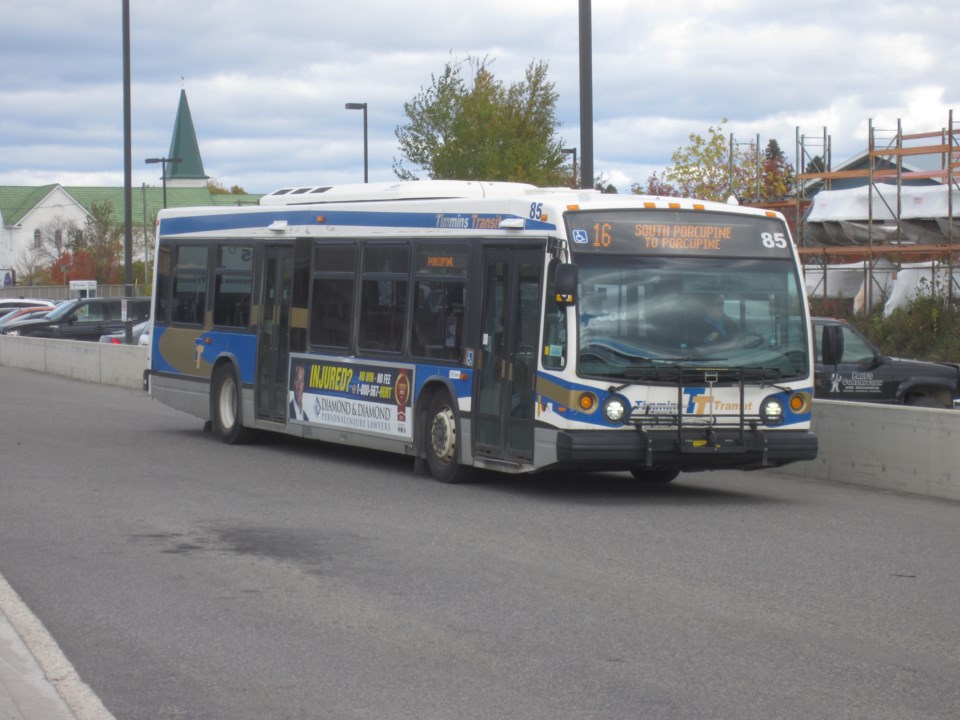A healthy and efficient public transportation system is a point of pride for many cities across Canada.
Timmins is no exception, but with low ridership and rising costs city council will need to make some tough decisions going forward.
Timmins Transit was just one of the city services scrutinized in the Core Services Review performed by consulting firm KPMG's Sudbury office.
A municipality chooses to provide transit services, and therefore it has the right to determine service levels, although some aspects of transit services are mandated by the Ontario Human Rights Commission.
KEY STATISTICS
Timmins Transit currently employs 36 full time employees, as well as 12 part-time bus drivers.
52 percent of the transit services budget goes to employees through wages and benefits.
There are 11 routes covering 255 kilometres, with 387 stops around the city.
From 2012 to 2014, Timmins Transit moved over 1.04 million passengers from point A to point B.
Monthly ridership varies from 80,000 to 95,000 users per month, with usage peaking in spring and fall.
Three routes provide 62 percent of the total ridership: Routes 16, 37 and 38.
The 16 connects South Porcupine and Porcupine to the downtown terminal.
Routes 37 and 38 provide alternating service from the downtown terminal to west end commercial areas such as the Timmins Square and Wal-Mart, and throughout the Melrose area.
However, there are five routes with less than three passengers per hour during off-peak times.
When KPMG's Oscar Poloni spoke to council about the draft report on October 5, he made a bold statement. “That's not a transit system, if I can be frank, that's a taxi. So the question is do you want to continue to drive buses that have 2 to 3 riders an hour, or would you like to carve that back?” said Poloni.
WAYS TO SAVE
Information within the Core Services Review reveals some suggestions for Mayor and council to consider.
To 'rationalize low volume traffic routes', which means to reduce service, could save the city an estimated $184,000.
The report suggests increasing, as well as negotiating with Northern College for an automatic student pass program, a move KPMG says could generate $250,000 in revenue.
From 2010 to 2014, the costs for Timmins Transit operations, which includes Handy Transit, has risen 1.4 percent which is one of the lowest increases for all city provided services.
Overall, the budgeted expenditures for transit services decreased by $70,000 from 2010 to 2015.
COMPARING TIMMINS WITH OTHER CITIES
On a per household basis, the transit service costs $288.14 in Timmins, $284.86 in Sudbury, $283.91 in North Bay, and $277.63 in Sault Ste. Marie.
When compared with similar sized municipalities in Southeastern Ontario, transit costs $252.99 in Cornwall and $211.36 in Belleville.
There are of course other factors involved in the difference, such as season lengths and fuel prices.
Transit fares in Timmins are $2.75 for adults, $2.25 for students and seniors.
North Bay Transit charges $3.00 for a single ride, but offers day passes for $8.00
Sudbury charges $3.00 for adults and students, $2.20 for seniors with photo I.D.
Sault Ste. Marie charges $2.50 for all riders.
Timmins recovers only 25 percent of its operating costs, Sault Ste. Marie recovers 27 percent, Sudbury recovers 40 percent and North Bay recovers an impressive 52 percent.
THE NEXT STEPS
The underlying theme of KPMG's analysis of Timmins Transit, was that although the city has to deal with higher fuel prices and tough winters, it is the routes with few riders that are adversely affecting the bottom line.
They suggest that council considers lowering monthly bus pass costs for seniors, while increasing the monthly pass cost for adults and students.
A partnership with Northern College could also have a significant impact.
Council will ultimately decide if any changes are to be made for 2016 shortly, as budget discussion season has already begun.



